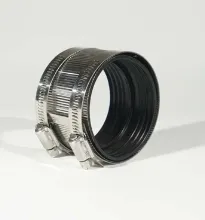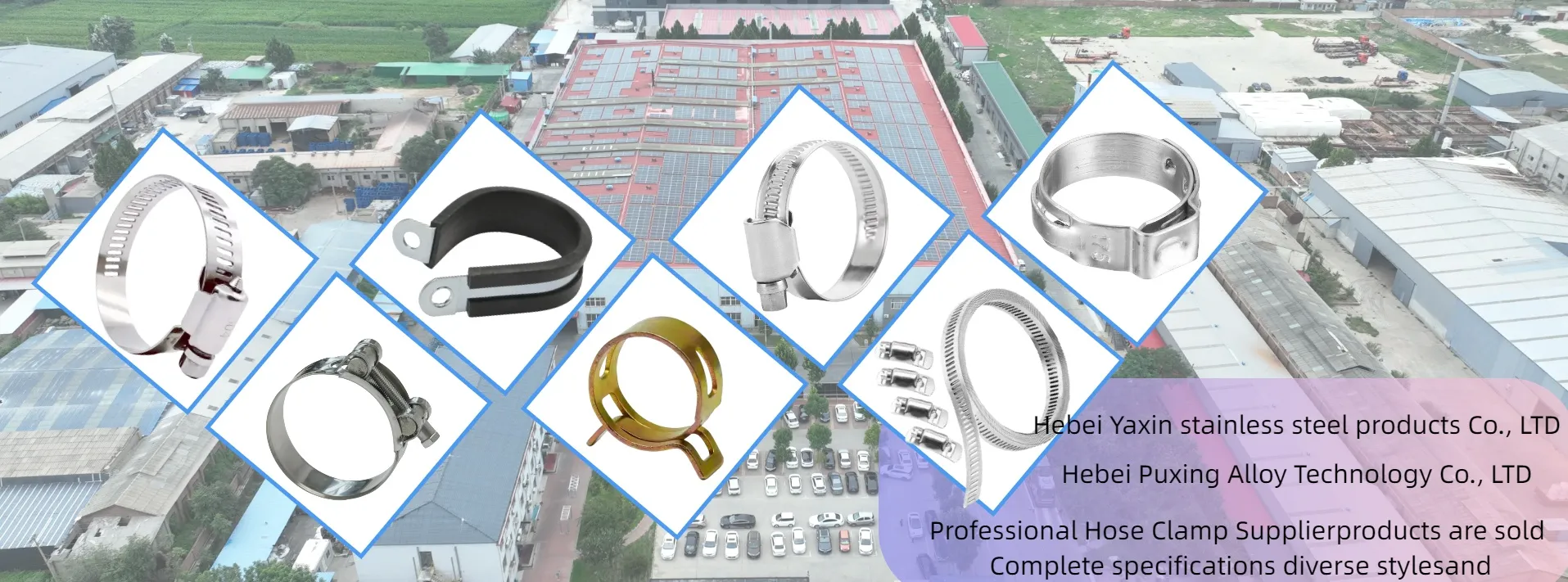- Phone:+86-17331948172 +86-0319-8862898
- E-mail: inquiry@puxingclamp.com
Jul . 24, 2025 15:32 Back to list
Pipe Clip Maintenance Tips
Pipe clips are essential components in various piping systems, providing secure fastening and vibration dampening. Proper maintenance of these critical elements ensures system integrity, prevents leaks, and extends service life. This comprehensive guide explores best practices for maintaining different types of pipe clips, from standard stainless steel varieties to specialized high-pressure clamping rings.

Industrial experience shows that well-maintained pipe clips can last up to 50% longer than neglected ones, while reducing system downtime by 30%. With our expertise in advanced stainless steel manufacturing, we'll share professional insights on inspection routines, cleaning methods, and replacement protocols that keep your piping systems operating at peak performance.
Routine Inspection Procedures for Pipe Clips
Regular inspection is the cornerstone of effective pipe clip maintenance. Implement these professional inspection protocols:
Visual Inspection Checklist
Check for visible corrosion or rust on tube clamps, especially in joints and contact points
Look for cracks or deformities in the clamping ring structure
Examine fastener integrity (bolts, screws, or spring mechanisms)
Identify any paint peeling or coating damage
Functional Testing
Conduct torque checks on fasteners (typically 10-15% below initial installation torque)
Verify proper alignment and positioning of pipe clips
Check for pipe movement within the clamp (should not exceed 0.5mm)
Test vibration dampening performance
For critical systems, we recommend:
Monthly inspections for industrial applications
Quarterly checks for commercial installations
Biannual reviews for residential systems
Our precision-manufactured stainless steel pipe clips feature laser-etched inspection markers that make wear patterns easier to identify during routine checks.
Cleaning and Corrosion Prevention for Tube Clamps
Proper cleaning significantly extends the life of tube clamps. Follow these industry-approved methods:
Standard Cleaning Procedure
Remove surface debris with a soft brush
Wash with mild detergent solution (pH 6-8)
Rinse with deionized water
Dry thoroughly with compressed air
Specialized Cleaning Needs
Food/pharmaceutical applications: Use USDA-approved sanitizers
Marine environments: Apply anti-corrosion spray after cleaning
Chemical plants: Neutralize residues before cleaning
Corrosion Prevention Techniques
Apply silicone-based protectant to clamping ring surfaces
Use sacrificial anodes in saltwater applications
Implement cathodic protection for underground installations
Consider our proprietary Xylan-coated pipe clips for extreme environments
Data from our accelerated aging tests show that proper cleaning routines can triple the service life of standard tube clamps in corrosive environments.
Replacement Guidelines for Clamping Rings
Knowing when to replace clamping rings prevents catastrophic system failures. Watch for these warning signs:
Critical Replacement Indicators
Visible cracks or material fatigue
Loss of more than 20% clamping force
Corrosion penetrating beyond surface level
Permanent deformation exceeding 3% of original dimensions
Failed pressure tests (for hydraulic/pneumatic systems)
Replacement Best Practices
Always replace complete sets in high-vibration areas
Match replacement clamping rings to original specifications
Use torque wrenches for precise fastener tension
Document replacement dates for future maintenance
Our high-grade stainless steel clamping rings feature wear indicators that change color when replacement is recommended, taking the guesswork out of maintenance schedules.
Pipe Clip:Advanced Maintenance for Specialized Applications
Certain environments demand enhanced pipe clip maintenance strategies:
High-Temperature Systems
Quarterly thermal imaging checks
Ceramic-based lubricants for tube clamp mechanisms
Expansion gap verification during seasonal changes
Cryogenic Applications
Monitor for embrittlement cracks
Special low-temperature gasket inspections
Frequent torque checks due to material contraction
Vibration-Intensive Environments
Monthly fastener tightness verification
Elastic clamping ring performance testing
Shock absorption pad inspections
For these critical applications, we offer maintenance-friendly pipe clip designs with:
Quick-release mechanisms for easy inspection
Built-in wear sensors
Modular components for partial replacements
FAQs About Pipe Clip Maintenance
How often should tube clamps be inspected in chemical plants?
In chemical processing facilities, tube clamps should undergo thorough monthly inspections due to aggressive chemical exposure. Pay special attention to crevice corrosion points and gasket integrity. Our 316L stainless steel pipe clips with electropolished surfaces are specifically engineered for such demanding environments.
What's the best lubricant for clamping ring mechanisms?
Food-grade silicone lubricants work best for most clamping ring applications.
Can damaged pipe clips be repaired instead of replaced?
While minor surface corrosion can sometimes be treated, most damaged pipe clips should be replaced entirely. Attempted repairs often compromise structural integrity. Our lifetime warranty program makes replacement more economical than risky repairs.
How do I prevent galvanic corrosion in tube clamp installations?
Use dielectric insulation between dissimilar metals, select pipe clips matched to your pipe material, and consider our isolation clamping rings with built-in polymer barriers. Proper material selection prevents 90% of galvanic corrosion issues.
What's the expected service life of quality pipe clips?
Properly maintained, our premium stainless steel pipe clips typically last:
15-20 years in indoor environments
10-12 years in outdoor installations
7-10 years in marine/offshore applications
5-8 years in chemical processing plants
Actual lifespan depends on maintenance frequency and environmental factors.
Effective maintenance of pipe clips and clamping rings is both an art and a science. By implementing these professional maintenance strategies, you can significantly extend component life, reduce system downtime, and prevent costly failures.
Remember that proper maintenance begins with quality components. Our precision-engineered stainless steel pipe clips are designed with maintenance in mind, featuring:
Corrosion-resistant alloys
Wear-indicator technology
Modular replacement parts
Easy-access designs
Investing in proper pipe clip maintenance today saves significant costs tomorrow while ensuring system reliability and safety. For specialized maintenance challenges, our engineering team offers custom consultation services to optimize your specific application needs.




